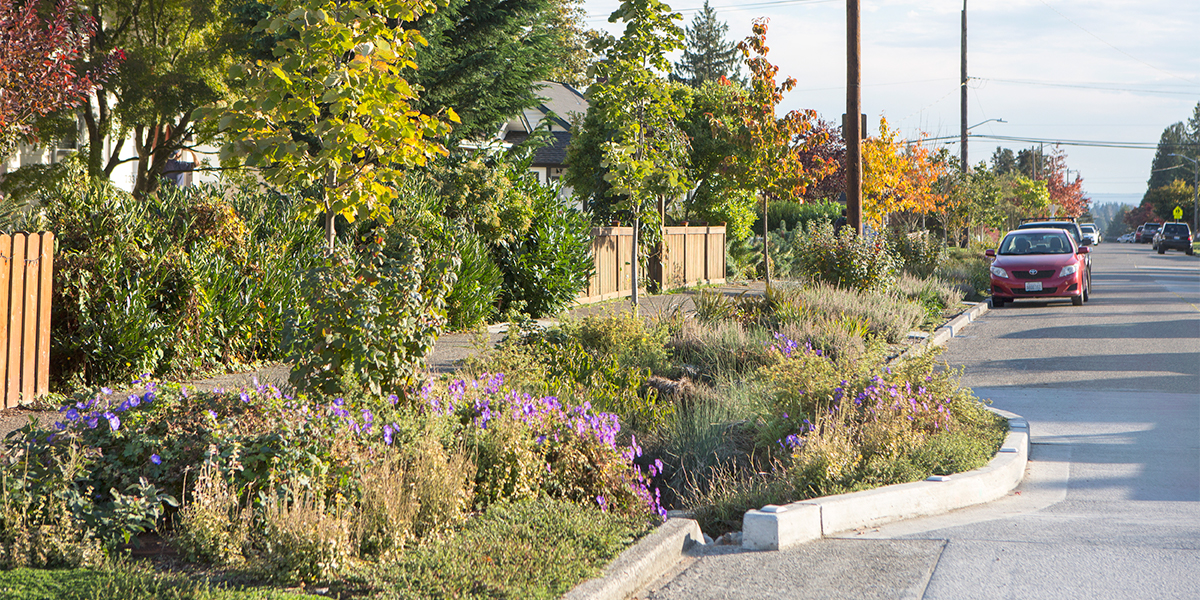
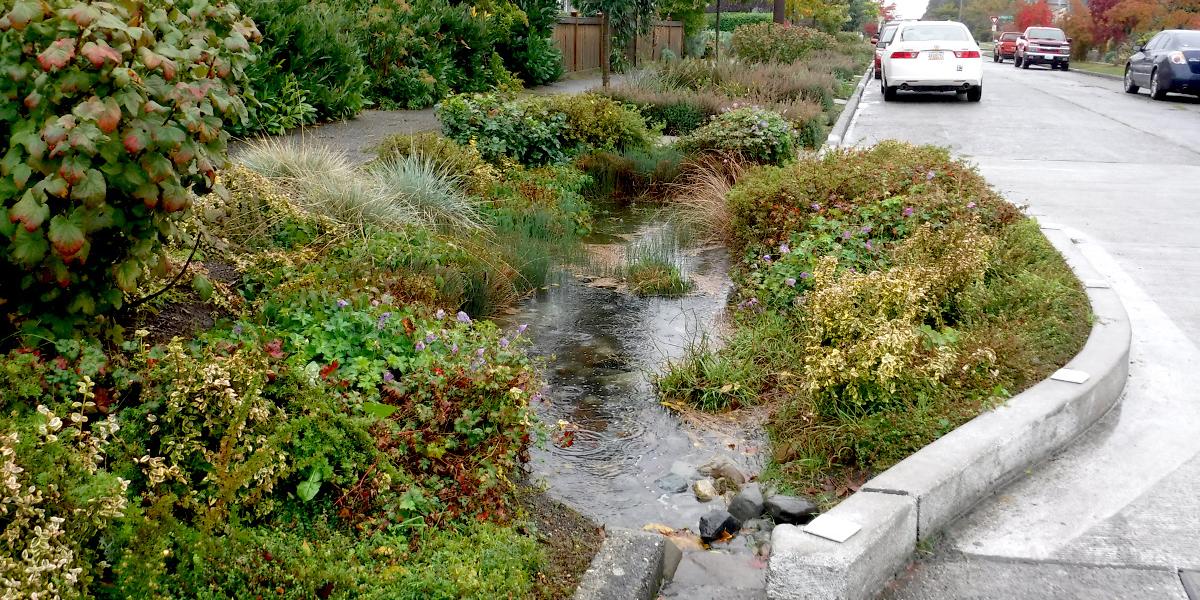
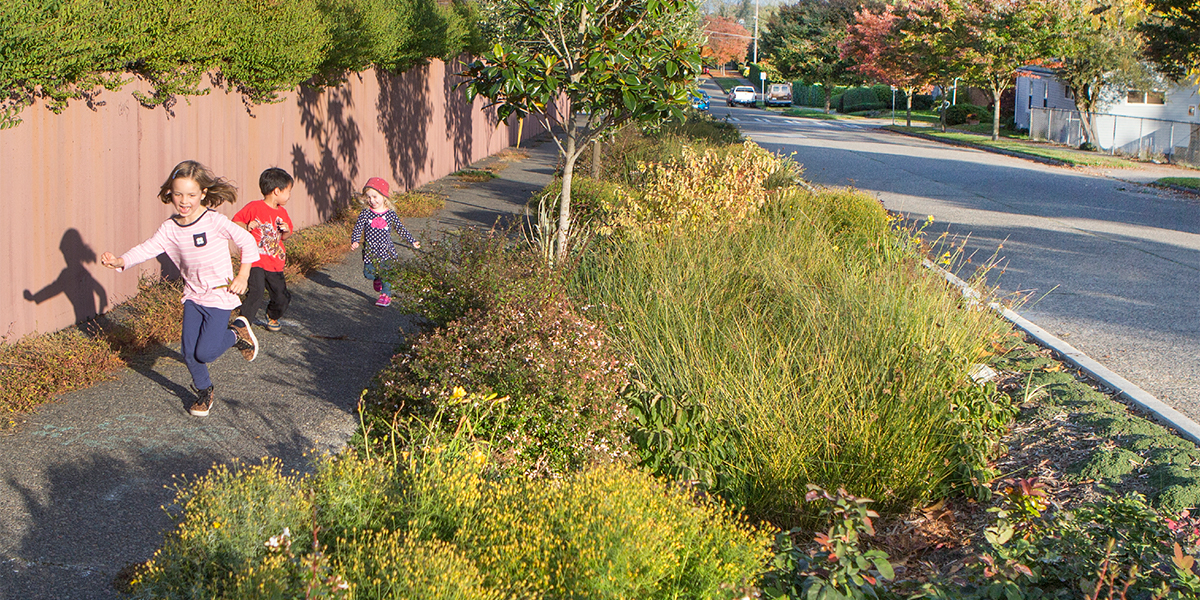
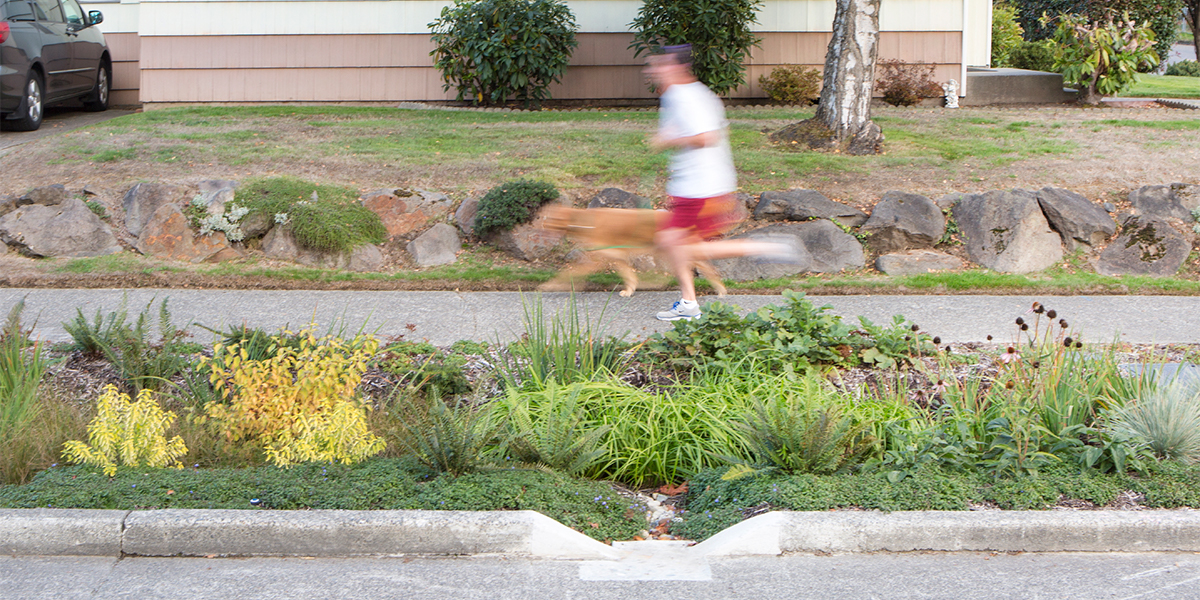
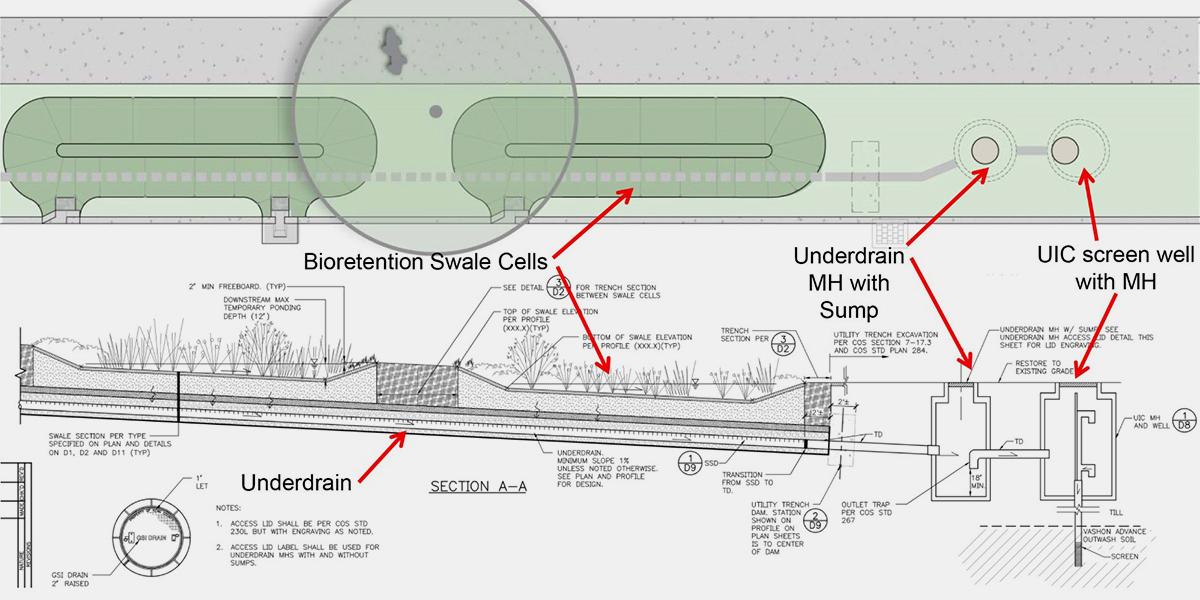
Barton Basin Stormwater Solutions
Every year, about 4 million gallons of polluted runoff—raw sewage and stormwater—entered Puget Sound from an overflowing combined sewer system in Seattle’s110-acre Barton Basin area.
The usual gray infrastructure solution would have been a huge underground storage tank. But that would have meant acquiring land and/or space in the street right-of-way—it was costly and still entailed risk. Instead, the green infrastructure solution enhances the green space of residential streets and didn’t require any mechanical or electrical systems to operate during rain events. It gives shape and form to a built infrastructure that based on living systems.
Planting strips now have 93 bioretention cells—highly engineered roadside rain gardens with native and drought-tolerant plants—to intercept stormwater on 15 residential blocks and infiltrate the filtered water within the block, rather than flowing back into the combined sewer system. In some cases, the bioretention cells were retrofitted into the existing planting strip width and in other areas, curb bulbs/extensions optimize the bioretention area and interception of street runoff and also provide co-benefits of traffic calming. These facilities intercept stormwater runoff every time it rains, reducing the volume of water flowing to the treatment plant by about 6 million gallons annually.
In this area of Seattle, the near surface soils were hard packed glacial till, not suitable for shallow infiltration. So the team’s new approach to the usual urban roadside bioretention system was an underdrain that directs water to an underground injection control screen well at the end of each block. The screen well allows the filtered water from the bioretention cells to percolate down for deep infiltration into advance outwash soils that are suitable for infiltration. The screen wells (up to 100’ deep wells) are completely accessible for maintenance and monitoring. The gardens are now a source of pride and enjoyment to the community.
The project won the 2018 Washington State Chapter of the American Council of Engineering Companies, Best in State: Gold Award, Future Value to Engineering Profession. It also won the 2017 American Society of Civil Engineers Seattle Chapter award for Outstanding Water Project.
